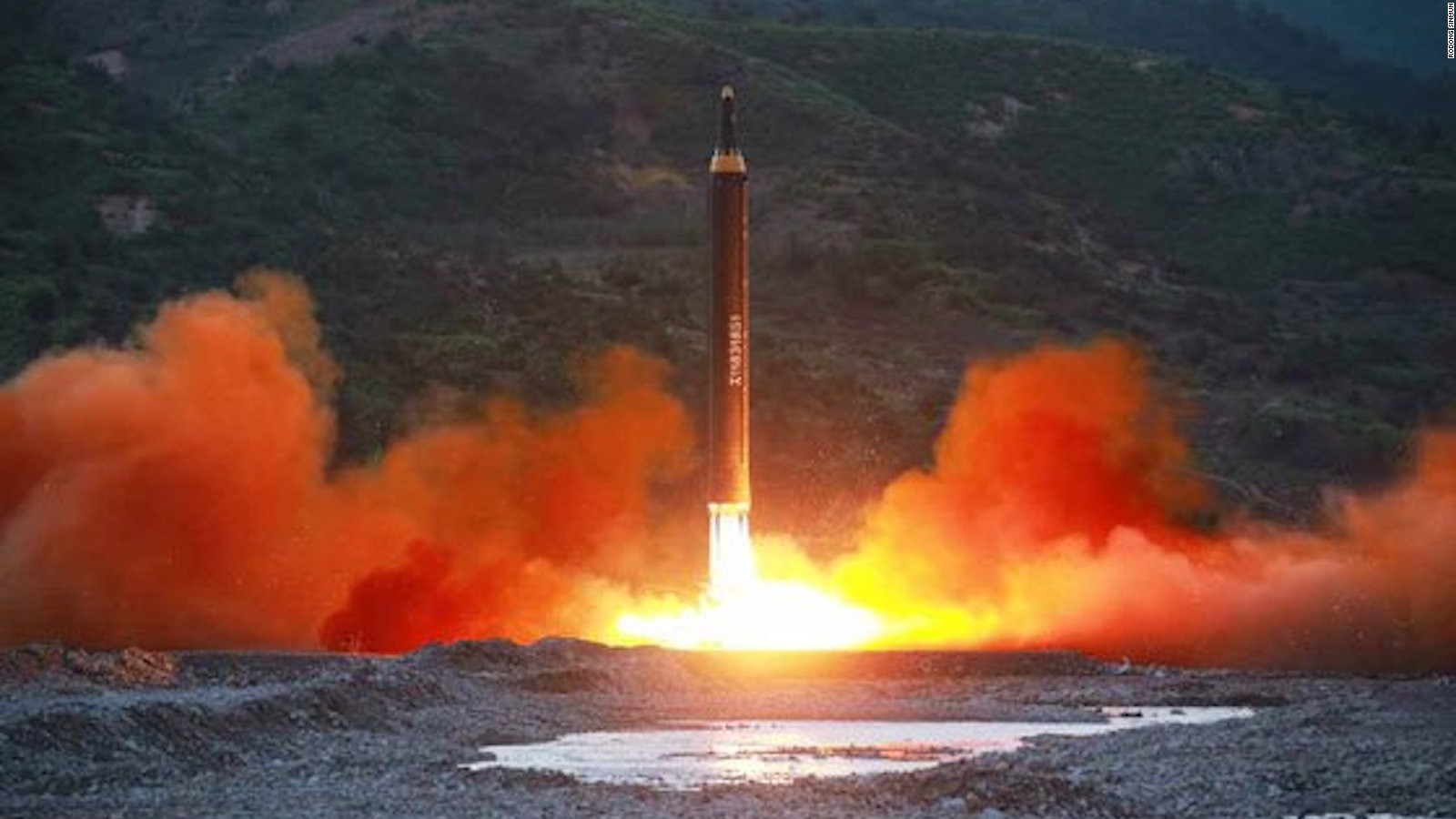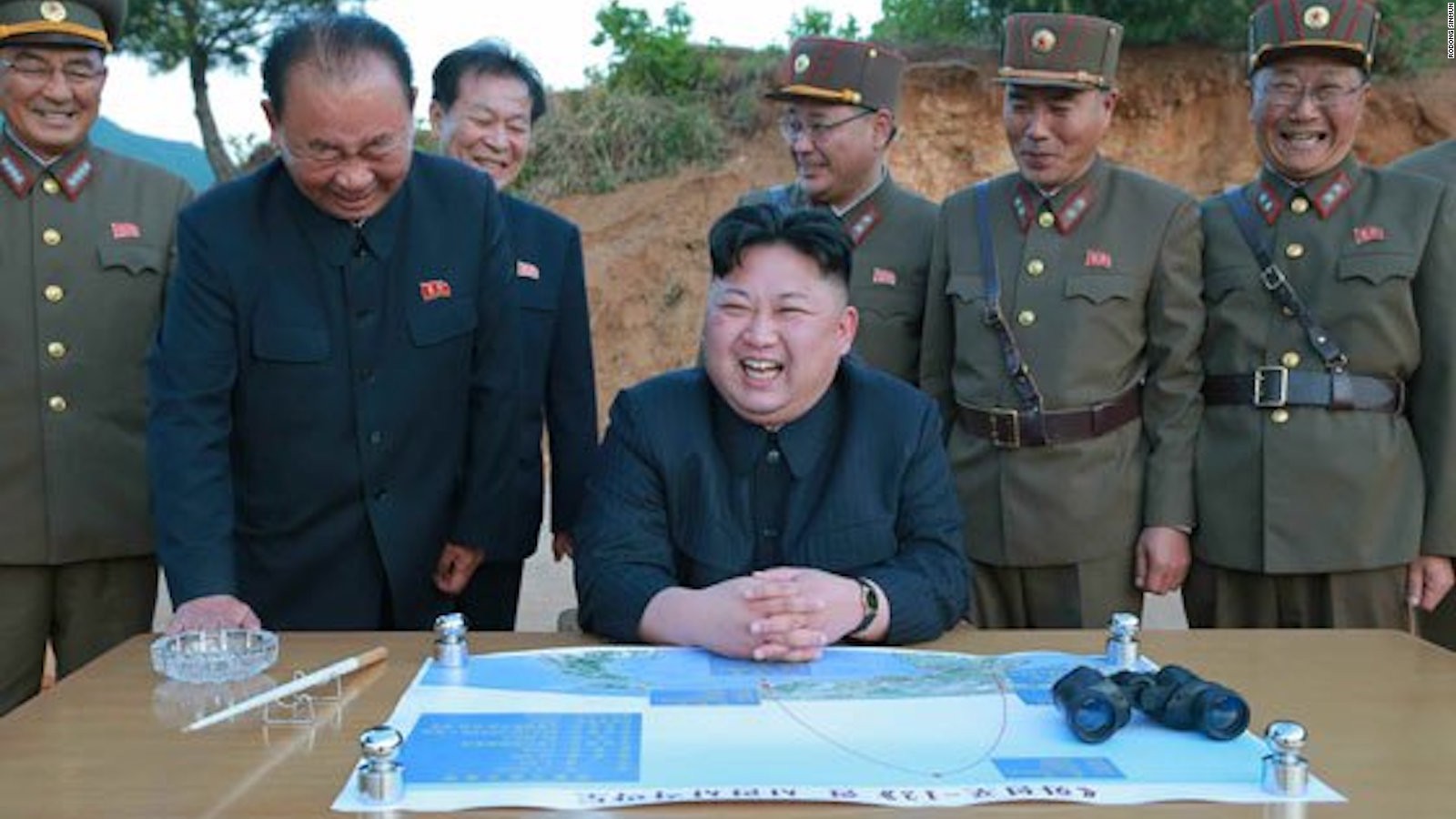(CNN)North Korea says the missile it tested Sunday is capable of carrying a large nuclear warhead, state media said Monday.
The country's leader, Kim Jong Un, supervised the launch of the Hwasong-12 missile that reached an altitude of 2,111.5 kilometers (1,312 miles) and flew 787 kilometers (489 miles), according to state news agency KCNA.
The test was "aimed at verifying the tactical and technological specifications of the newly developed ballistic rocket capable of carrying a large-size heavy nuclear warhead," KCNA said.
North Korea warned the United States not to provoke it, saying the "US mainland and Pacific operations" are within range of North Korean missiles.
Analysts called this North Korea's most successful missile test ever and a significant advancement in its quest to build a nuclear-capable intercontinental ballistic missile (ICBM).
"North Korea's latest successful missile test represents a level of performance never before seen from a North Korean missile," aerospace engineer John Schilling wrote on the blog 38 North, published by the US Korea Institute at Johns Hopkins University.
The high altitude and long flight time -- 30 minutes, the US said -- indicate a missile with an extended range, according to David Wright, co-director of the Union of Concerned Scientists.
Writing on his organization's blog, Wright pointed out that if the missile did reach that height and fly that far, it could reach the US territory of Guam in the Pacific.
Step towards long range missile?
Guam is home to Andersen Air Force Base, through which the US Air Force rotates heavy bombers including B-1s, B-2s and B-52s.
KCNA said the test showed North Korea "has all powerful means for retaliatory strike" should Washington take any military action to stop its nuclear weapons program.
Tong Zhao, an analyst with the Carnegie-Tsinghua Center for Global Policy, said if the missile does have the range to hit Guam, it could give North Korea "a regional nuclear deterrence," meaning it might not need to pursue an intercontinental ballistic missile (ICBM), which could reach the US mainland.
But Melissa Hanham, senior research associate at the James Martin Center for Nonproliferation Studies in California, said it could be a stepping stone to just that.
"This may become half or a third of an ICBM," she said, pointing out that ICBMs are built in two or three stages stacked atop of each other.
Hanham also said the fact that the missile's re-entry vehicle flew so high above the Earth put it under more stress than a warhead might undergo when fired on a more normal, flatter trajectory
North Korean engineers "may well be able to draw warhead re-entry data from that which is applicable to their ICBM ambitions," said Euan Graham, an expert on North Korea at Australia's Lowy Institute.
"Given speculation over the past months about the possibility of military action by the Trump administration to prevent Pyongyang from acquiring such weapons, the possible testing of ICBM subsystems in this low-key manner may be a North Korean hedge against the possibility of such action," 38 North's Schilling wrote.
Differing assessments
US officials said the missile launched near the city of Kusong, in western North Korea, flew across the country and into the Sea of Japan/East Sea, hitting the water about 60 miles from Vladivostok in eastern Russia.
Russia, however, said the missile fell 310 miles (500 kilometers) from its coast, according to a report on RT.com.
Russia initially responded to North Korea's test by putting its far eastern air defenses on high alert, according to a report from the RIA-Novosti news agency.
Russian President Vladmir Putin reportedly discussed the launch with Chinese President Xi Jinping during a meeting in Beijing. "Concern was expressed about the escalation of tension, including in connection with the launch (of the missile of the DPRK)," Kremlin spokesman Dmitry Peskov was quoted as saying in Russian state media.
Sunday's test is the first from North Korea since South Korean President Moon Jae-in took office last week. Moon has advocated dialogue with North Korea to denuclearize.
Moon said the missile test violates UN Security Council resolutions and called it a severe challenge to the peace and security of the Korean Peninsula and the world, presidential spokesman Yoon Young-chan said.
South Korea needs to show the North that even though talks are possible, it will only be possible if North Korea changes its attitude, the President told staff.
He said South Korea would respond to provocations.
Messages from Pyongyang?
North Korea's Kim launched Sunday's test as Chinese leader Xi Jinping hosted a major trade and infrastructure summit with multiple world leaders in Beijing.



No comments:
Post a Comment